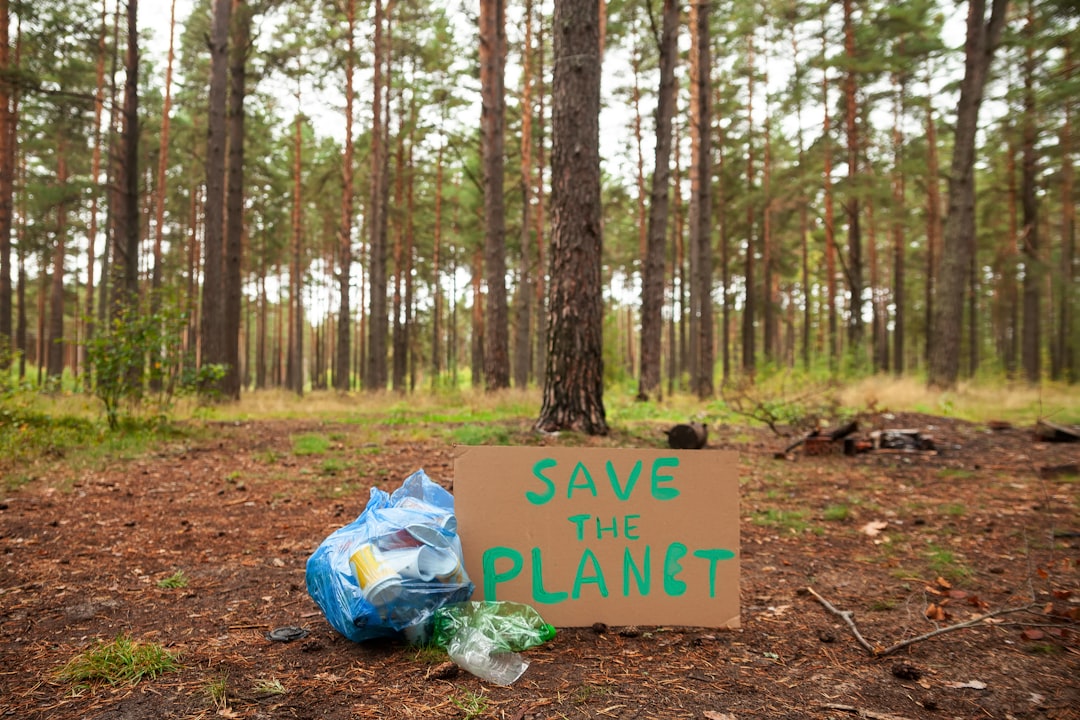In an era where environmental consciousness is paramount, the automotive industry faces increasing scrutiny regarding its practices, particularly in the realm of repair and disposal. The concept of environmentally responsible repair and disposal encompasses a range of practices aimed at minimizing waste, reducing pollution, and promoting sustainability. As vehicles age or sustain damage, the need for repairs becomes inevitable, and this is where the challenge lies.
Traditional methods of repair and disposal often lead to significant environmental impacts, including the accumulation of non-biodegradable materials in landfills and the release of harmful substances into the ecosystem. The automotive sector, especially in relation to auto glass, presents unique challenges and opportunities for environmentally responsible practices. Windshields and other glass components are not only essential for vehicle safety but also represent a substantial portion of automotive waste.
As consumers become more aware of their environmental footprint, there is a growing demand for businesses to adopt sustainable practices in the repair and disposal of auto glass. This article delves into the intricacies of auto glass recycling, the feasibility of windshield recycling, sustainable disposal methods, and the broader implications of these practices on our environment.
Key Takeaways
- Environmentally responsible repair and disposal of auto glass is crucial for reducing environmental impact and promoting sustainability.
- Auto glass recycling practices are becoming more common and can significantly reduce the amount of waste sent to landfills.
- Windshields can be recycled, and the process involves separating the glass from the plastic interlayer for reuse.
- Sustainable disposal of auto glass involves proper handling and recycling to minimize environmental harm.
- Proper disposal of auto glass is important for preventing pollution and conserving natural resources.
Auto Glass Recycling Practices
Auto glass recycling is a critical component of sustainable automotive practices. The process involves collecting, processing, and repurposing glass from vehicles that have reached the end of their life cycle or have been damaged beyond repair. Unlike many other materials, glass can be recycled indefinitely without losing its quality or purity.
This characteristic makes it an ideal candidate for recycling initiatives aimed at reducing waste and conserving resources. The recycling process typically begins with the collection of broken or discarded glass from auto repair shops, salvage yards, and recycling centers. Once collected, the glass undergoes a thorough cleaning process to remove contaminants such as adhesives, plastics, and metals.
This step is crucial because impurities can compromise the quality of the recycled material. After cleaning, the glass is crushed into small pieces known as cullet. This cullet can then be melted down and reformed into new glass products, including new windshields, bottles, or even fiberglass insulation.
The recycling of auto glass not only conserves raw materials but also significantly reduces energy consumption compared to producing new glass from virgin materials. For instance, using recycled glass in manufacturing can save up to 30% of the energy required to produce new glass.
Can Windshields be Recycled?
The question of whether windshields can be recycled is often met with confusion due to the unique composition of automotive glass. Windshields are typically made from laminated safety glass, which consists of two layers of glass with a layer of polyvinyl butyral (PVB) sandwiched in between. This PVB layer provides safety by preventing shattering upon impact but complicates the recycling process.
While traditional glass can be easily recycled, the presence of PVB in windshields poses challenges that require specialized recycling techniques. Despite these challenges, advancements in recycling technology have made it possible to recycle windshields effectively. Some facilities have developed methods to separate the PVB from the glass, allowing both materials to be processed and reused.
The glass can be crushed and repurposed in various applications, while the PVB can be transformed into products such as flooring materials or used in the production of new laminated glass. However, not all recycling centers are equipped to handle this process, which means that many windshields still end up in landfills. Raising awareness about the recyclability of windshields and encouraging consumers to seek out facilities that specialize in this type of recycling is essential for improving overall recycling rates.
Sustainable Disposal of Auto Glass
Sustainable disposal of auto glass involves more than just recycling; it encompasses a holistic approach to managing end-of-life glass products in an environmentally friendly manner. When auto glass cannot be repaired or recycled, it is crucial to ensure that it is disposed of responsibly to minimize its impact on the environment. This can include utilizing specialized disposal facilities that adhere to environmental regulations and best practices for waste management.
One effective method for sustainable disposal is through partnerships with local recycling programs or organizations that focus on diverting waste from landfills. These programs often provide collection points for auto glass and ensure that it is processed in a way that maximizes recovery and minimizes environmental harm. Additionally, some companies are exploring innovative solutions such as converting waste glass into aggregate for construction projects or using it as a raw material in manufacturing processes.
By finding alternative uses for auto glass waste, businesses can contribute to a circular economy that prioritizes sustainability.
The Importance of Proper Disposal of Auto Glass
Proper disposal of auto glass is critical not only for environmental reasons but also for public safety and health. When auto glass is improperly discarded, it can lead to hazardous situations. Broken glass poses risks to wildlife and humans alike; sharp shards can cause injuries or become embedded in soil and waterways, leading to further ecological damage.
Moreover, when auto glass ends up in landfills, it contributes to the growing problem of landfill overflow and pollution. Furthermore, improper disposal can hinder recycling efforts by contaminating recyclable materials with non-recyclable waste. This contamination can lead to increased costs for recycling facilities and reduce the overall efficiency of recycling programs.
By ensuring that auto glass is disposed of correctly—whether through recycling or sustainable waste management practices—consumers and businesses can play a vital role in promoting environmental stewardship and supporting local economies focused on sustainability.
Environmental Benefits of Recycling Auto Glass
Recycling auto glass offers numerous environmental benefits that extend beyond mere waste reduction. One significant advantage is the conservation of natural resources. The production of new glass requires substantial amounts of raw materials such as silica sand, soda ash, and limestone.
By recycling auto glass, these materials are conserved, reducing the need for extraction and processing activities that can be detrimental to ecosystems. Additionally, recycling auto glass significantly lowers energy consumption compared to producing new glass from virgin materials. The melting point for recycled glass is lower than that for raw materials, resulting in reduced greenhouse gas emissions during production.
For example, studies have shown that using recycled glass can reduce carbon dioxide emissions by approximately 20% compared to using new materials. This reduction in energy use not only helps combat climate change but also contributes to cleaner air quality by decreasing pollutants released during manufacturing processes.
Our Company’s Efforts in Environmentally Responsible Repair and Disposal
At our company, we recognize the importance of adopting environmentally responsible practices in every aspect of our operations, particularly concerning auto glass repair and disposal. We have implemented a comprehensive program aimed at minimizing our environmental impact while providing high-quality services to our customers. This program includes partnerships with local recycling facilities that specialize in processing auto glass, ensuring that we divert as much waste as possible from landfills.
Moreover, we actively educate our customers about the recyclability of their windshields and other auto glass components. By providing information on how they can participate in recycling efforts—such as directing them to appropriate drop-off locations—we empower consumers to make informed decisions about their vehicle maintenance needs. Our commitment extends beyond just recycling; we also strive to use eco-friendly materials in our repair processes whenever possible, further reducing our carbon footprint.
How Consumers Can Support Environmentally Responsible Auto Glass Practices
Consumers play a pivotal role in promoting environmentally responsible auto glass practices through their choices and actions. One of the most effective ways individuals can contribute is by seeking out businesses that prioritize sustainability in their operations. When selecting an auto repair shop or service provider, consumers should inquire about their recycling policies and whether they have partnerships with local recycling facilities for auto glass disposal.
Additionally, consumers can take proactive steps by properly maintaining their windshields and other auto glass components to extend their lifespan. Regular inspections and timely repairs can prevent the need for complete replacements, thereby reducing overall waste generation. When replacement is necessary, consumers should ensure that they dispose of their old windshields responsibly by returning them to a facility that specializes in recycling or participating in community recycling events.
By making informed choices and advocating for sustainable practices within their communities, consumers can significantly impact the future of auto glass repair and disposal practices while contributing to a healthier planet for generations to come.
FAQs
What is environmentally responsible repair and disposal?
Environmentally responsible repair and disposal refers to the practice of repairing and disposing of products in a way that minimizes their impact on the environment. This includes using sustainable materials, reducing waste, and properly disposing of any hazardous materials.
Why is environmentally responsible repair and disposal important?
Environmentally responsible repair and disposal is important because it helps to reduce the environmental impact of products throughout their lifecycle. It also helps to conserve natural resources, reduce pollution, and minimize the amount of waste sent to landfills.
What are some examples of environmentally responsible repair and disposal practices?
Examples of environmentally responsible repair and disposal practices include using recycled or sustainable materials in repairs, refurbishing and reusing products whenever possible, and properly disposing of any hazardous materials in accordance with environmental regulations.
How can businesses and individuals contribute to environmentally responsible repair and disposal?
Businesses and individuals can contribute to environmentally responsible repair and disposal by choosing repair and disposal options that prioritize sustainability, recycling and reusing products whenever possible, and properly disposing of any hazardous materials. Additionally, supporting companies that have environmentally responsible practices can also make a positive impact.




